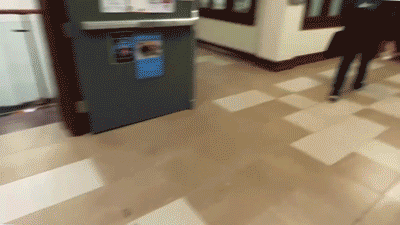Alaska
How additional NOAA layoffs could affect Alaska weather forecasts

ANCHORAGE, Alaska (KTUU) – There is concern among the weather community about the National Oceanic and Atmospheric Administration’s (NOAA) weather resources and whether they would remain intact if there were additional layoffs or service cuts within the National Weather Service (NWS).
Regardless of where weather forecasts come from, they all rely on data from the NOAA’s National Weather Service.
Meteorologists, including those at Alaska’s News Source, use observations from NWS weather stations, NOAA-provided satellites, radar, and global computer models to make daily forecasts. The NWS is also responsible for providing all lifesaving weather alerts when severe weather is forecasted.
Since January, nearly 25% of NOAA employees have been laid off.
Some federal employees have been “reinstated” following federal court orders, but remain on paid leave.
Some Alaska communities have already had services reduced.
The NWS announced last month that it would indefinitely suspend weather balloon launches in Kotzebue due to staffing shortages. Those launches collected critical data, including temperatures, humidity, and pressure.
The NWS declined an interview and was unable to provide the number of Alaska employees who had been terminated.
See a spelling or grammar error? Report it to web@ktuu.com
Copyright 2025 KTUU. All rights reserved.

Alaska
In Alaska’s warming Arctic, photos show an Indigenous elder passing down hunting traditions
KOTZEBUE, Alaska (AP) — The low autumn light turned the tundra gold as James Schaeffer, 7, and his cousin Charles Gallahorn, 10, raced down a dirt path by the cemetery on the edge of town. Permafrost thaw had buckled the ground, tilting wooden cross grave markers sideways. The boys took turns smashing slabs of ice that had formed in puddles across the warped road.
Their great-grandfather, Roswell Schaeffer, 78, trailed behind. What was a playground to the kids was, for Schaeffer – an Inupiaq elder and prolific hunter – a reminder of what warming temperatures had undone: the stable ice he once hunted seals on, the permafrost cellars that kept food frozen all summer, the salmon runs and caribou migrations that once defined the seasons.
Now another pressure loomed. A 211-mile mining road that would cut through caribou and salmon habitat was approved by the Trump administration this fall, though the project still faces lawsuits and opposition from environmental and native groups. Schaeffer and other critics worry it could open the region to outside hunters and further devastate already declining herds. “If we lose our caribou – both from climate change and overhunting – we’ll never be the same,” he said. “We’re going to lose our culture totally.”
Still, Schaeffer insists on taking the next generation out on the land, even when the animals don’t come. It was late September and he and James would normally have been at their camp hunting caribou. But the herd has been migrating later each year and still hadn’t arrived – a pattern scientists link to climate change, mostly caused by the burning of oil, gas and coal. So instead of caribou, they scanned the tundra for swans, ptarmigan and ducks.
A lifetime of hunting
Caribou antlers are stacked outside Schaeffer’s home. Traditional seal hooks and whale harpoons hang in his hunting shed. Inside, a photograph of him with a hunted beluga is mounted on the wall beside the head of a dall sheep and a traditional mask his daughter Aakatchaq made from caribou hide and lynx fur.
He got his first caribou at 14 and began taking his own children out at 7. James made his first caribou kill this past spring with a .22 rifle. He teaches James what his father taught him: that power comes from giving food and a hunter’s responsibility is to feed the elders.
“When you’re raised an Inupiaq, your whole being is to make sure the elders have food,” he said.
But even as he passes down those lessons, Schaeffer worries there won’t be enough to sustain the next generation – or to sustain him. “The reason I’ve been a successful hunter is the firm belief that, when I become old, people will feed me,” he said. “My great-grandson and my grandson are my future for food.”
That future feels tenuous
These days, they’re eating less hunted food and relying more on farmed chicken and processed goods from the store. The caribou are fewer, the salmon scarcer, the storms more severe. Record rainfall battered Northwest Alaska this year, flooding Schaeffer’s backyard twice this fall alone. He worries about the toll on wildlife and whether his grandchildren will be able to live in Kotzebue as the changes accelerate.
“It’s kind of scary to think about what’s going to happen,” he said.
That afternoon, James ducked into the bed of Schaeffer’s truck and aimed into the water. He shot two ducks. Schaeffer helped him into waders – waterproof overalls – so they could collect them and bring them home for dinner, but the tide was too high. They had to turn back without collecting the ducks.
The changes weigh on others, too. Schaeffer’s friend, writer and commercial fisherman Seth Kantner grew up along the Kobuk River, where caribou once reliably crossed by the hundreds of thousands.
“I can hardly stand how lonely it feels without all the caribou that used to be here,” he said. “This road is the largest threat. But right beside it is climate change.”
___
Follow Annika Hammerschlag on Instagram @ahammergram.
___
The Associated Press receives support from the Walton Family Foundation for coverage of water and environmental policy. The AP is solely responsible for all content. For all of AP’s environmental coverage, visit https://apnews.com/hub/climate-and-environment
Alaska
Trump signs bills to ease way for drilling and mining in Arctic Alaska

President Donald Trump has signed bills nullifying Biden-era environmental protections in the Arctic National Wildlife Refuge and in Northwest Alaska in an effort to promote oil and mining activity.
The actions were a win for Alaska’s congressional delegation, which sponsored the measures to open opportunities for drilling in the refuge and development of the 200-mile road through wilderness to reach the Ambler mineral district.
The actions are part of Trump’s effort to aggressively develop U.S. oil, gas and minerals with Alaska often in the limelight.
Potential drilling in the refuge and the road to minerals are two of the standout issues in the long-running saga over resource development in Alaska, with Republican administrations seeking to open the areas to industry and Democratic administrations fighting against it.
The signings were a loss for some Alaska Native tribal members and environmental groups that had protested the bills, calling them an unprecedented attack against land and wildlife protections that were developed following extensive public input.
An Alaska Native group from the North Slope region where the refuge is located, however, said it supported the passage of the bill that could lead to oil and gas development there.
One of the bills nullifies the 2024 oil and gas leasing program that put more than half of the Arctic refuge coastal plain off-limits to development. The former plan was in contrast to the Trump administration’s interest in opening the 1.5-million-acre area to potential leasing.
The federal government has long estimated that the area holds 7.7 billion barrels of “technically recoverable oil” on federal lands alone, slightly more than the oil consumed in the U.S. in 2024. The refuge is not far from oil infrastructure on state land, where interest from a key Alaska oil explorer has grown.
Two oil and gas lease sales in the refuge so far have generated miniscule interest. But the budget reconciliation bill that passed this summer requires four additional oil and gas lease sales under more development friendly, Trump-era rules.
Voice of Arctic Iñupiat, a group of leaders from tribes and other North Slope entities, said in a statement that it supports the withdrawal of the 2024 rules for the refuge.
The group said cultural traditions and onshore oil and gas development can coexist, with taxes from development supporting wildlife research that support subsistence traditions.
“This deeply flawed policy was drafted without proper legal consultation with our North Slope Iñupiat tribes and Alaska Native Corporations,’ said Nagruk Harcharek, president of the group. “Yet, today’s development shows that Washington is finally listening to our voices when it comes to policies affecting our homelands.”
The second bill that Trump signed halts the resource management plan for the Central Yukon region. The plan covered 13.3 million acres, including acreage surrounding much of the Dalton Highway where the long road to the Ambler mineral district would start before heading west. The plan designated more than 3 million acres as critical environmental areas in an effort to protect caribou, salmon and tundra.
The bills relied on the Congressional Review Act, which gives Congress a chance to halt certain agency regulations while blocking similar plans from being developed in the future.
U.S. Rep. Nick Begich and Sens. Lisa Murkowski and Dan Sullivan attended the signing in the White House.
“We’ve known the road to American prosperity begins in Alaska; the rest of America now knows that as well,” Begich said in a post on social media platform X.
Alaska’s story is one of vast potential and opportunity. Equally as important, America is stronger when Alaska is empowered to lead in energy and resource development.
With the leadership of @POTUS and @HouseGOP, we are advancing legislation at an historic pace to unlock… pic.twitter.com/c0cjA2lNcK
— Congressman Nick Begich (@RepNickBegich) December 12, 2025
Begich introduced the measures. Murkowski and Sullivan sponsored companion legislation in the Senate.
They were part of five bills Trump signed Thursday to undo resource protections plans for areas in Montana, North Dakota and Wyoming, using the Congressional Review Act.
Trump last week also signed a bill revoking Biden-era restrictions on oil and gas activity in the National Petroleum Reserve-Alaska, another Arctic stretch of federal lands west of the refuge. That measure was also sponsored by the Alaska delegation.
The Wilderness Society said in a statement Thursday that the bills destabilize public lands management.
“Americans deserve public lands that protect clean air and water, support wildlife and preserve the freedom of future generations to explore,” said the group’s senior legal director, Alison Flint. “Instead, the president and Congress have muzzled voices in local communities and tossed aside science-based management plans that would deliver a balanced approach to managing our public lands.”
Alaska tribal members criticize end of Central Yukon plan
The Bering Sea-Interior Tribal Commission, consisting of 40 Alaska tribes, said in a statement Thursday that it condemns the termination of the Central Yukon management plan using the Congressional Review Act.
The action dissolves more than a dozen years of federal and tribal collaboration, the group said.
The termination of the Central Yukon plan will hurt tribes that hunt caribou and other subsistence foods, the group said.
“On the heels of the seventh summer without our Yukon River salmon harvest, we are stunned at the idea our leaders would impose more uncertainty around the management of the lands that surround us,” said Mickey Stickman, former first chief of the Nulato tribal government. “The threat of losing our federal subsistence rights, and confusion over how habitat for caribou, moose, and salmon will be managed, is overwhelming.”
After the signing, federal management of the Central Yukon region will revert back to three separate old plans, removing clarity for tribes and developers and requiring the Bureau of Land Management to start again on a costly new plan, the group said.
“This decision erases years of consultation with Alaska Native governments and silences the communities that depend on these lands for food security, cultural survival, and economic stability,” said Ricko DeWilde, a tribal member from the village of Huslia, in a statement from the Defend the Brooks Range coalition. “We’re being forced to sell out our lands and way of life without the benefit of receiving anything in return.”
Alaska
Opinion: A new energy project, new risks and new responsibilities for Alaska
Alaska may soon face major decisions about the future of the Alaska LNG project and, if so, the Legislature will need to ensure that every step serves the best interests of Alaskans.
It is essential to remember that Senate Bill 138, the blueprint for state involvement in Alaska LNG, was passed in 2014 for a very different project: one led by ExxonMobil, BP and ConocoPhillips, with a key role fulfilled by TransCanada. Today’s project is led by a private-equity developer, Glenfarne, pursuing a structure that diverges dramatically from what lawmakers contemplated more than a decade ago. When a project changes this much, the underlying statutes need to be revisited.
In June, the Alaska Gasline Development Corp.’s president told his board that AGDC would be coordinating with the developer, the administration and the Legislature regarding legislation needed to support project development. He also noted that AGDC would work with the administration and Legislature on policies required to exercise the corporation’s option to invest 5% to 25% equity at Final Investment Decision, or FID. When AGDC itself signals that legislation is necessary, we should look forward to their outreach.
SB 138 also assigned important responsibilities to the departments of revenue and natural resources that may require legislative action. One key responsibility is the Legislature’s authority to approve major gas project contracts negotiated by the DNR commissioner. The law clearly states that balancing, marketing and gas sale agreements for North Slope gas cannot take effect without explicit legislative authorization. That statutory requirement was intentional and recognizes a project of this scale demands legislative oversight.
We also know that the pressure for speed on complex megaprojects often backfires, sometimes creating more problems than it solves. The Legislature must balance the legitimate need for progress with the responsibility to ensure Alaskans are not asked to assume unreasonable financial risk. As Speaker Bryce Edgmon recently observed, legislation of this magnitude “could dominate the session” and “take significant time.” Senate Finance Co-Chair Bert Stedman was even more direct: if we get this wrong, it could be “detrimental for generations.”
Last week, 4,000 miles away in Washington, D.C., Glenfarne and POSCO International announced a major strategic partnership. It is a meaningful milestone. But Alaska has seen similar announcements before, and it does not diminish the need for hard questions. If anything, it raises them.
Final Investment Decision is when investors and lenders commit billions based on the project’s economics and the state’s fiscal terms. Any legislation affecting property taxes, payments-in-lieu-of-taxes, aka PILTs, state equity, fiscal stability, or upstream royalties and production taxes must be decided before this takes place.
The Legislative Budget and Audit Committee has focused on providing lawmakers and the public with the information needed to understand the choices ahead. I revisited the Legislature’s 2014 “Alaska LNG: Key Issues” report, which helped lawmakers evaluate the original SB 138 framework. Building on that model, I directed our consultants, GaffneyCline, to prepare an updated “key issues” report; not to endorse or oppose the current project, but to provide a high-level overview of potential policy choices, which should be available to the public within the next few days.
The refreshed “key issues” report will be an important starting point. I ask Alaskans to approach it with an open mind and to read it as objectively as possible, free from assumptions shaped by past disappointments or early optimism. Keep asking tough questions of the Legislature, AGDC, Glenfarne and the administration. Don’t assume the project is a done deal or a doomed one. This is not about cheerleading or obstruction, but insisting on rigorous analysis, strong oversight and a fair deal for our children and grandchildren.
Some Alaskans have raised questions about a potential conflict of interest: GaffneyCline is a subsidiary of Baker Hughes, which recently announced agreements with Glenfarne to help advance the Alaska LNG project. I share those concerns, which is why I have met with the Legislature’s director of Legal Services and with GaffneyCline’s North America director. I have been assured by GaffneyCline’s leadership that no one outside the GaffneyCline project team has influenced their analysis, and that their global reputation for independence and trust remains intact. Still, we also must fully vet this issue when we convene in Juneau next month. Transparency and independence are non-negotiable.
The recent ceremony in Washington, D.C., with Glenfarne and POSCO International underscores the project’s potential; however, the authority to determine how and when Alaska monetizes its resources rests here, not with dignitaries celebrating overseas commitments. Our future will be determined in Alaska, by Alaskans, based on the fullest and most honest understanding of the choices before us.
Sen. Elvi Gray-Jackson, D-Anchorage, represents Senate District G, which includes Midtown, Spenard and Taku Campbell in Anchorage. Sen. Gray-Jackson serves as the chair of the Legislative Budget and Audit Committee.
• • •
The Anchorage Daily News welcomes a broad range of viewpoints. To submit a piece for consideration, email commentary(at)adn.com. Send submissions shorter than 200 words to letters@adn.com or click here to submit via any web browser. Read our full guidelines for letters and commentaries here.
-

 Alaska1 week ago
Alaska1 week agoHowling Mat-Su winds leave thousands without power
-

 Texas1 week ago
Texas1 week agoTexas Tech football vs BYU live updates, start time, TV channel for Big 12 title
-
Ohio1 week ago
Who do the Ohio State Buckeyes hire as the next offensive coordinator?
-

 Washington4 days ago
Washington4 days agoLIVE UPDATES: Mudslide, road closures across Western Washington
-

 Iowa6 days ago
Iowa6 days agoMatt Campbell reportedly bringing longtime Iowa State staffer to Penn State as 1st hire
-

 Miami, FL7 days ago
Miami, FL7 days agoUrban Meyer, Brady Quinn get in heated exchange during Alabama, Notre Dame, Miami CFP discussion
-

 Cleveland, OH6 days ago
Cleveland, OH6 days agoMan shot, killed at downtown Cleveland nightclub: EMS
-
World6 days ago
Chiefs’ offensive line woes deepen as Wanya Morris exits with knee injury against Texans


















